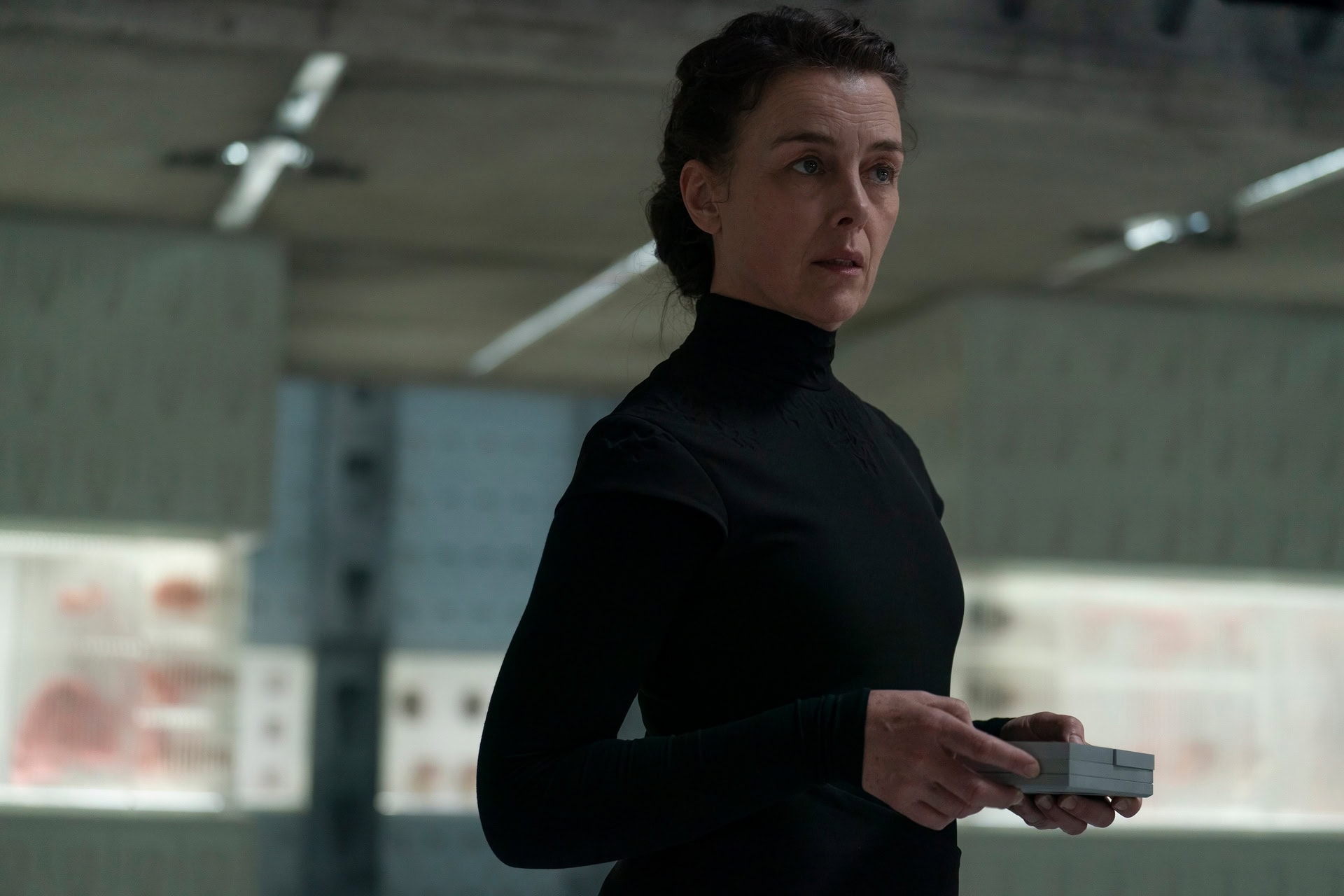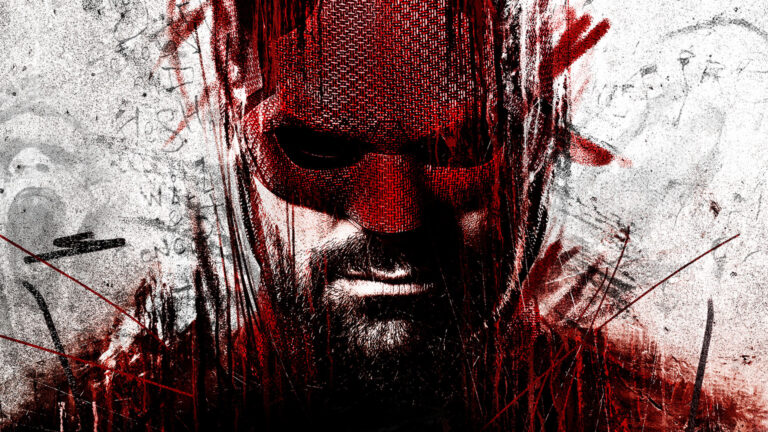Sarah C. Reeves, ACE and Mark Hartzell, ACE: Editing Dune: Prophecy
Sarah C. Reeves, ACE and Mark Hartzell, ACE revealed the editing process for Dune: Prophecy, demystifying their hidden art by delving into the construction of narrative for the ambitious series.

The reboot of the Dune franchise with Denis Villeneuve’s cinematic masterpieces has spearheaded a new prequel TV series that further explores the sci-fi world that started with Frank Herbert’s groundbreaking titular novel. Dune: Prophecy, set 10,000 years before the ascension of Paul Atreides, follows two Harkonnen sisters, Valya and Tula as they combat forces that threaten the future of humankind and establish the fabled sect that will become known as the Bene Gesserit. Every filmmaking aspect of this six-part series is exquisite–magnetizing acting performances, gorgeous costumes, ambitious visual effects, you name it. However, what really makes the storytelling so gripping is the invisible art of editing. Sarah C. Reeves and Mark Hartzell constructed a multilayered narrative that weaves through the different character arcs in a way that never loses the audience, making every key moment powerful by exploiting every facet of the show’s all-star cast and fulfilling the director’s vision for each episode.
Sarah C. Reeves, who edited Season One’s premiere, confessed that she was not familiar with the world of Dune. Anna Foerster wanted a fresh pair of eyes for introducing Dune: Prophecy, and although the editor had seen Dune: Part One, the executive producer asked Reeves to refrain from watching or reading any other content to keep an unbiased perspective. On the other hand, Mark Hartzell was raised watching David Lynch’s Dune, and after falling in love with Villeneuve’s epics and learning that a prequel series was in the works, he had to get an interview. The rest is history, Hartzell editing the third episode and the two co-editing In Blood, Truth, Dune: Prophecy’s penultimate episode–elevating its storytelling with shocking revelations and plot twists that could only be delivered by the masterful craft of editing.
The Hidden Hand
Reeves had the momentous task of setting the pace and tone of the show along with introducing the key protagonists in an unforgettable way for the season premiere. She revealed that Dune: Prophecy started during the 2023 Writers Guild of America strike, so no changes could be made to the scripts–which were dense: “The editor’s cut was around 2 hours and 38 minutes … that’s really long for a first cut for an episode of a television show. We had to condense the amount of storyline to the most basic needs.” Luckily, showrunner Alison Schapker worked with Reeves and the other editors (except for Mark Hartzell) on Westworld, so there was a cohesive environment that allowed the team to work in symphony while bringing an editorial process that played with storylines in a fluid way.
“I call myself a subtext editor … I always like to edit the scene for the purpose of the subtext, but also the architecture of the scene. I want to introduce everyone’s character in a very dynamic way.”
Although many characters are introduced in The Hidden Hand, it is clear that Valya Harkonnen is the central protagonist of Dune: Prophecy. The young sister took the spotlight at the beginning of the episode, transitioning then to her ascension in the Sisterhood years later in an impactful play of angles and details. Reeves said, “I call myself a subtext editor … I always like to edit the scene for the purpose of the subtext, but also the architecture of the scene. I want to introduce everyone’s character in a very dynamic way. When we first meet Valya, 30 years later, I hold off on showing her face as long as possible. We cut to her hand, where we see the ring [symbolizing that now] she is mother superior, then just holding on to her back as much as possible until we reveal her face.”

Another key character that was established in the first episode was Princess Ynez. Sarah C. Reeves explained that her reveal was scripted to happen during the wedding fitting scene but was an editorial choice to instead start with Ynez and Keiran Atreides’ training session: “I think a lot of people can relate to mothers and daughters bickering over their different opinions of things, but that was not how I wanted the audience to meet her. I was cutting together the scene of Keiran and Ynez sparring, and the heat and chemistry between them informed a very proactive princess.” On the other hand, Pruwet Richese, the to-be-husband was originally meant to be seen for the first time during the pre-wedding meeting between Emperor Javicco Corrino and Duke Ferdinand Richese, but eventually was removed via VFX–something that was pitched to director Anna Foerster by Reeves. She said, “You keep hearing about this young kid, and then when you finally get to the ceremony, you are shocked by how young he is. It’s that idea of teasing out as much as you can story wise … let’s plant the seeds and see them grow for as long as possible. It’s just the power of what you can do in editorial.”
The ending of The Hidden Hand is a powerful sequence that Reeves likes to call the “death march,” which leads to the excruciating death of both Kasha and Pruwet by the hands of Desmond Hart. “It’s one of my favorite sequences in the series. You have Jen and Lila talking in bed at night, and I do a post-lap that kicks it off with Jen saying, ‘Don’t worry, doe eyes, one way or another, the past always finds us’ playing over Valya walking up to stare into her past, which is a reset at one point. She wasn’t supposed to walk away, but the way I edited it feels like she’s taking a pause and really thinking, ‘I hope I did the right thing.’ Our composer Volker Bertelmann has this great cue that’s just electric and plays until the end. It was just a delightful and twisted sequence. What a fun way to kick off a series.”
“I am getting to edit a Harkonnen sister at the Sisterhood sitting here talking about spice tea. What world am I in now? Oh, I’m in the Dune world.”
Sisterhood Above All
The third episode of Dune: Prophecy is all about Tula Harkonnen. Before jumping onto her tragic flashback, Olivia Williams delivered arguably the most intense performance for her character arc–which happened to be Mark Hartzell’s first scene to edit. This moment of duality of Tula’s devotion to the Sisterhood and her determination to see the Harkonnen plan to fruition was devised by Hartzell’s clever editing: “I am getting to edit a Harkonnen sister at the Sisterhood sitting here talking about spice tea. What world am I in now? Oh, I’m in the Dune world.” He added, “It was actually editorially fascinating because she gave a very understated performance and one that was very overstated. I was like, ‘I want both.’ I want her to break for a moment and lose composure, and then I want her to get it back as fast as possible. That was fun because I got to help choose the values that sculpted that moment out of her performance. That’s the dance of an editor and a performance. You get to work with the actor indirectly, but very directly.”

The flashback emphasized the dark side of Tula that you never see in the present day. Here, the audience experienced a crucial moment revealing the Harkonnen’s revenge on the Atreides by the hands of Tula. Hartzell explained, “It’s a horseback sweeping romance. Tula is trying to build a new life for herself with the possibility of some warmth and love in her life, which is all true except that her Harkonnen background is going to make her not choose that path, even though I think all of her feelings are real and valid. I tried to make sure that you always saw her emotions develop on screen. She is now thinking about her proposal and feeling remorse for the things that she has done, but also relief … you get to see every moment develop. She’s not a monster. She might be a murderer, but you do feel that she has lost something and made choices and has feelings about them. You do get that sort of delicious combination of things in this flashback. It was very easy to cut between past and present in an organic way.”
In Blood, Truth
Originally, Mark Hartzell was only set to edit the third episode of Dune: Prophecy, but with Sarah C. Reeves fully focused on completing the season premiere, he was called to aid on Episode Five: In Blood, Truth. Reeves revealed that the assembly for the episode was nearly two hours long, which Hartzell was able to finecomb. Once The Hidden Hand was completed, Reeves joined Hartzell, and together they created the most intriguing episode yet. This time, Desmond Hart gets to truly shine–his legitimization as the Emperor’s new Bashar and ultimately the reveal of his true identity. For the former, Sarah C. Reeves revealed that the fleet was originally scripted to be in orbit, but the importance of its symbolism as a show of strength for the Imperium and Hart inspired the editors to work with the VFX team to elevate that moment: “What if those Kindjal fighters were actually swooping down as part of a military formation to give Desmond his flowers?” Hartzell added, “I was like, ‘It could be like that shot from The Force Awakens with the X-wing fighters on the water,’ and they were like, ‘Yeah, but we’re going to try something different. We’re going to try to make that even better. And they did.”

The end of the episode is pure artistry, with old and new romances colliding: Emperor Corrino and Sister Francesca reunited while Empress Natalya forged a new alliance with Desmond Hart. Reeves said, “Mark built that little piece of their romance into Natalya’s monologue about her disdain for them,” which created a beautiful interplay of power that, through seduction, sets up the season finale in the most fascinating way imaginable.
For more Dune: Prophecy behind-the-scenes, make sure to check out the show’s official Instagram page, and make sure to watch and rewatch the HBO original series on Max.


